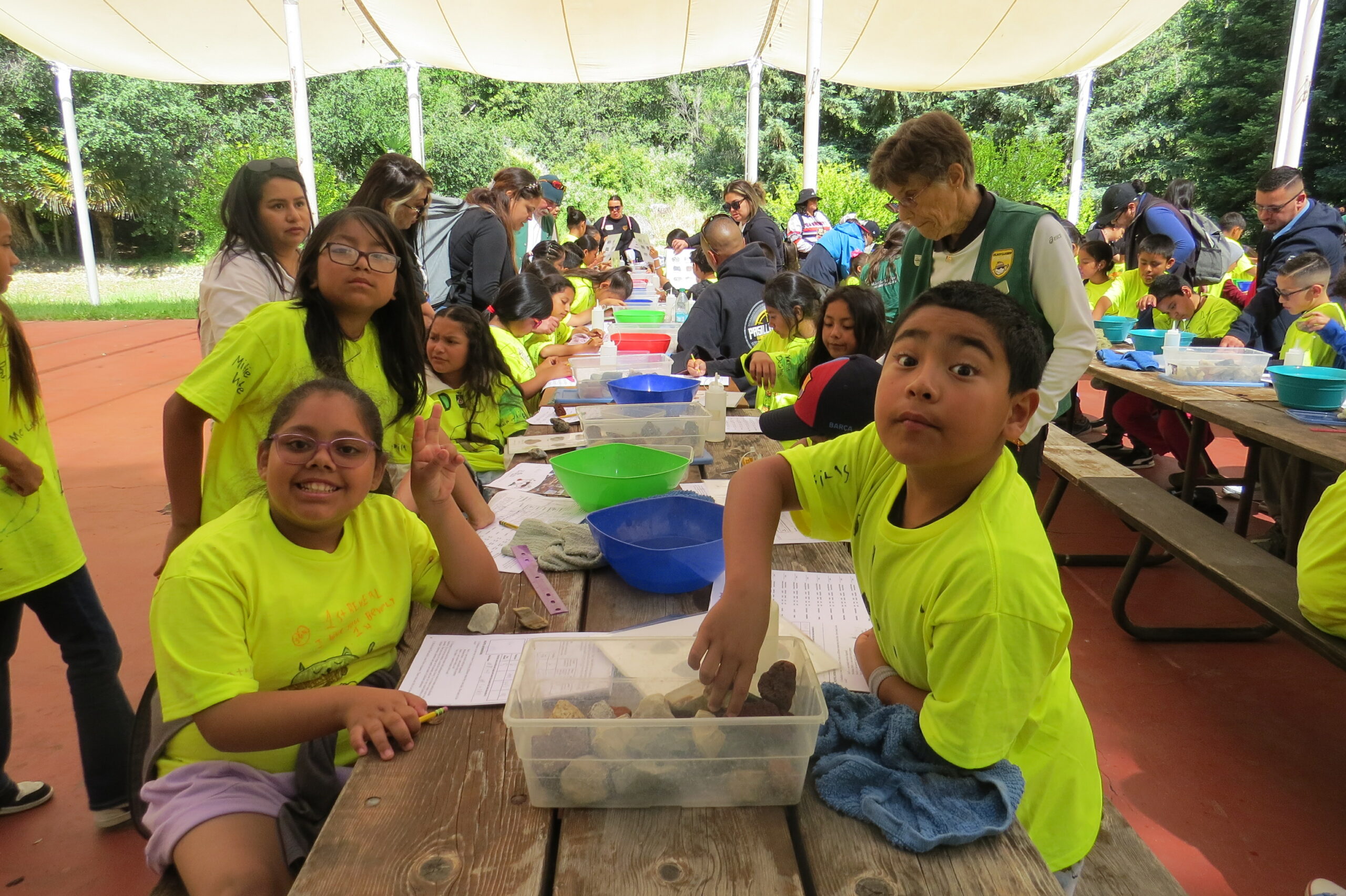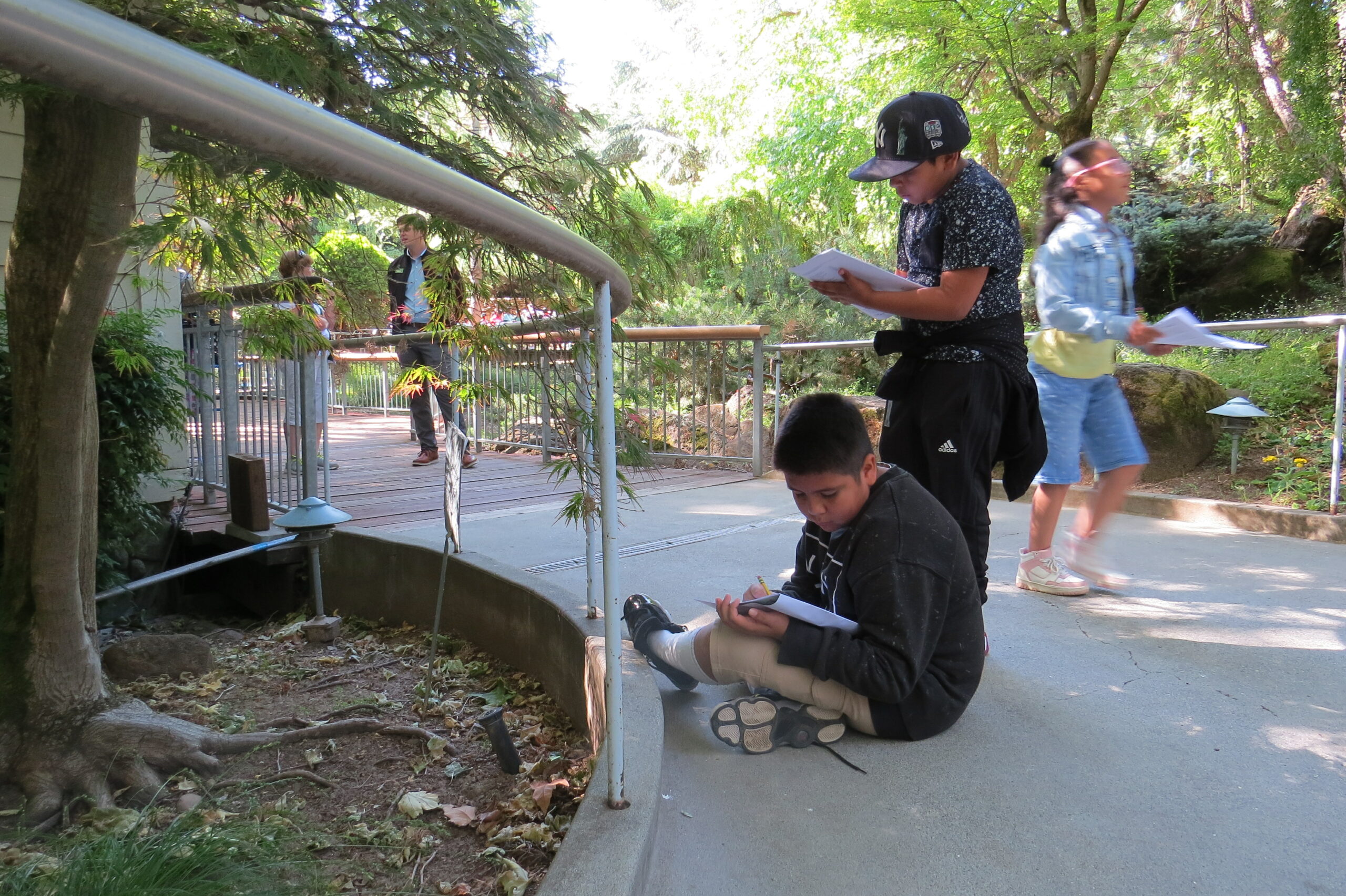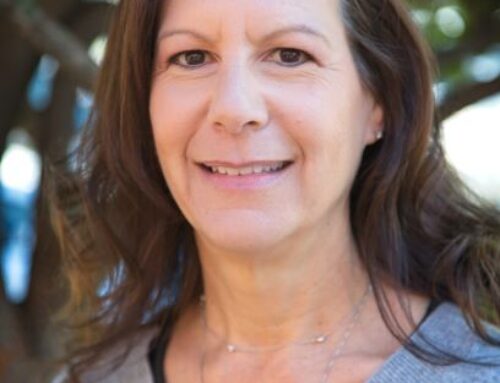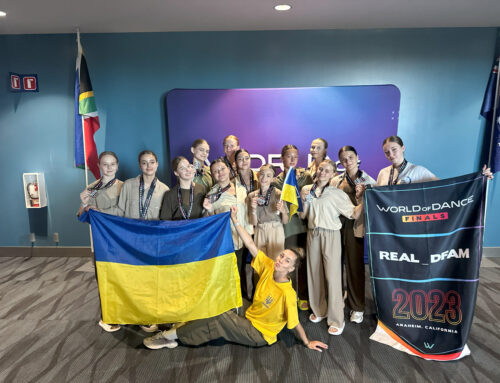Park hosts up to 900 K-5 students Fridays in May
![]()

Photo by Calvin Nuttall
By Calvin Nuttall
Amidst the twisting trunks and wondrous waterfalls of the lush Gilroy Gardens Family Theme Park, children from schools all around the region come to discover the wonders of Mother Nature.
Natural Science Days at the Hecker Pass venue offers an opportunity for classes K-5 to have the 536-acre attraction to themselves as they explore six educational “stations” designed to impart a curriculum ranging from geology to modern renewable energy.

Photo by Calvin Nuttall Young students learn about geological science examining various types of rocks during Natural Science Days at Gilroy Gardens.
“The program is 100 percent geared toward exposing children to natural sciences,” said Cameron Childers, 24, Gilroy Gardens’ manager of education. “We feature programs to teach things like the anatomy of a flower and rock identification. Our newest program is clean and renewable energy. We’re trying to keep up-to-date with some of the more commonly used STEM topics, as well as what’s relevant right now.”
Childers manages the event with the assistance of more than 50 volunteer docents, many of whom are former educators. Together they have the capacity to host up to 900 students at a time, with separate curriculums for grades K-2 and 3-5.
Natural Science Days are hosted every Friday in the month of May, with two additional Thursdays set aside for exclusively Gilroy Unified School District field trips.
“We see a lot of private schools, a lot of home schools, and public schools as well,” Childers said. “This year we even had a group come out as a high school group because they have a Future Educators club as part of their own activities. They came out just to kind of shadow and watch our docents and learn what it means to put on a field trip like this.”
Natural Science Days has been a part of the park’s educational mission since its earliest years, when it was Bonfante Gardens, owned and operated by local business owner Michael Bonfante. In 2009, Childers himself was a beneficiary of the program as a fourth-grade student at Rucker Elementary School.

Photo by Calvin Nuttall
“Bonfante built this park with the incredible love and appreciation for trees that he had,” Childers said. “He wanted to share that and build something unique and different. There is no other horticulture theme park in California like this. And on top of that, the education we do here through our 501(c)(3) listing as a nonprofit is unique.”
 At the Anatomy of a Flower learning station, students have the opportunity to dissect and examine flowers to learn about how plant pollination works, as well as gain experience operating science equipment. This station is equipped with a suite of sparkling new microscopes.
At the Anatomy of a Flower learning station, students have the opportunity to dissect and examine flowers to learn about how plant pollination works, as well as gain experience operating science equipment. This station is equipped with a suite of sparkling new microscopes.
“For years we had been using a lot of old equipment,” Childers said. “But this year, with the help of an Amazon grant that we were awarded, we were able to purchase all new microscopes for our flower anatomy station.”
In their geology lesson, students are given a bin of rock specimens and walked through various identification techniques, including a scratch test and an acid test. The lesson is contextualized as the kids wander the park between learning stations and have an opportunity to spot the many native rocks along its twisting paths.
In the Claudia’s Garden area, students learn to practice plant identification through the Plants with Funny Shapes lesson. This garden, named for Michael Bonfante’s wife, contains some of the most unique grafted plants and circus trees that the park is known for.
“Our docent team takes the time to explain a couple of the different trees, plants, and such items that are currently in the garden,” Childers said. “Then, in their booklet packets (the students) are given, they either are given the general location of an item and then they have to go fill in the blank, or they’re just given the picture and that forces them to go search the entire garden to find the name of the plant.”
At the Food Chain station, students get the chance to meet many native animals that interact with the ecosystem and rely on plants for food, expanding their educational exposure beyond just the botanical element of nature that the park’s theme is focused on.
“I do personally love the food chain station,” Childers said. “It is so fun and interactive, and the reactions of the kids never fails to amaze me.”
Jen Van Deren of Gilroy-based Animal Art Farm has worked with Gilroy Gardens in one capacity or another for more than 13 years, she said. Once upon a time, she ran the park’s petting zoo. Since the nonprofit has shifted focus to more events-based programming, she has been delighted to bring her animals to Natural Science Days to teach students. Her menagerie includes chickens, goats, snakes, tarantula, cockroaches, bunnies, and a bearded dragon named Sunshine.
“I was born loving animals,” Van Deren said. “Animals fit into the park because there is a whole ecosystem here. You’ve got the botanical garden aspect, but what keeps that going? Animals, all the way down to insects. I think that’s where it ties in, it’s the nature aspect.”
 Veterans of the park might remember Banana Bob, a 14-foot yellow Burmese python who was one of the recurring residents of the park’s petting zoo.
Veterans of the park might remember Banana Bob, a 14-foot yellow Burmese python who was one of the recurring residents of the park’s petting zoo.
“Everybody still asks about Banana Bob,” Van Deren said. “I am delighted to report that Banana Bob is now happily retired.”
In the famous Monarch Gardens greenhouse, students get the chance to learn about where many of the fruits they eat come from. They even get the chance to see some types of tropical fruit growing on the exotic collection of trees planted there, including bananas, pomelos, and sapote fruit.
At the Renewable Energy learning station, developed in partnership with Silicon Valley Clean Energy, students learn about the differences between renewable and non-renewable power sources, and the specific merits and drawbacks of different renewable types including solar, wind, hydroelectric, and geothermal.
“This is our first year of this program, and we want to get it cutting-edge,” Childers said. “Silicon Valley Clean Energy provided the sponsorship to us last year to get the program going, and we’re hoping to just maintain and renew that sponsorship over the years. This station will definitely get some love over the next couple of years as we build it up. All of our curriculum is Next Generation Science Standard accredited.”
Calvin Nuttall is a Morgan Hill-based freelance reporter.






